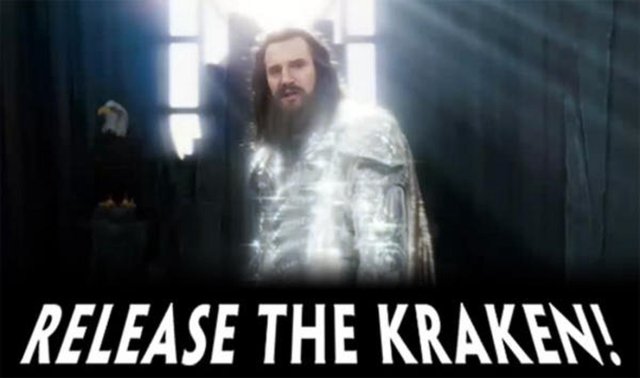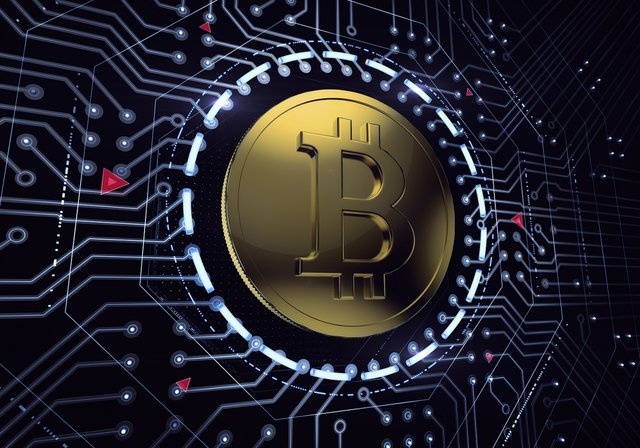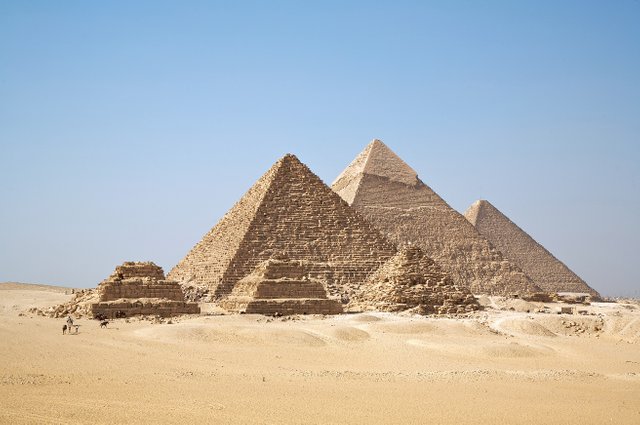Proof-of-Work is the Real Power Behind Bitcoin's Immutable Global Blockchain

What does immutability mean in this new era of digital currencies? Why should humanity care about a digital system that is unchanging? How can hunmanity benefit from this new invention?
First, What does immutable mean? Let's define it.
Immutable:
Unchanging over time or unable to be changed. Fixed, set, rigid, changeless, inflexible, permanent, established, "carved in stone", unchanging, unchangeable, unvarying, unvaried, static, constant, lasting, enduring, steadfast, and most importantly... not mutable.Immutability is a tricky concept. First of all because it doesn't really exist. Right? Everything changes. There is no thing in nature that is forever unchangeable — The Universe itself, the vacuum, particles, stars, planets, galaxies... Everything changes. Nothing is immutable. That's why some people are slow to understand this concept right away.
Release The Kraken!

On January 3rd 2009, Satoshi Nakamoto released the Kraken... and sadly not too many people noticed. Honestly, It took me about 3 years to wake up to the power of immutability. So, I understand this is not an easy pill to swallow.
Enter the Bitcoin
Nothing is as immutable as Bitcoin. So, Bitcoin actually defines immutability at the moment. Why is Bitcoin immutable? What gives Bitcoin blockchain the characteristics of immutability? What is it that makes it unchangeable?

The first answer most people go for is the "blockchain". The blockchain makes Bitcoin immutable because every block depends on its predecessor creating an unbreakable chain back to the Genesis block and therefore if you change something it would be noticed, therefore it's unchangeable... and that's the wrong answer. Because, it's not really the blockchain that gives Bitcoin its immutability, and that's a really important nuance to understand.
The blockchain makes sure that you can't change something without anyone noticing, and in security we call that "tamper evident". Meaning that if you change it, it is evident. You can not tamper it, without evidence of your tampering.
But there's a higher standard security, what we call tamper-proof. And tamper-proof is something that cannot be tampered with. Not just fully visible if it's tampered with, but cannot be tempered with, immutable. And the characteristic that give Bitcoin it's tamper-proof capability is not the blockchain. It's proof-of-work.
Proof-of-work is what makes Bitcoin fundamentally immutable and that is a really important concept to understand because a lot of people throwing around words like blockchain and claiming that these things are immutable, even though they don't have a proof-of-work consensus algorithm or any kind of consensus algorithm that gives them immutability.
At best, they offer tamper evidence. Meaning someone will notice, but they are not unchangeable. This distinction is going to become historically important.
If Bitcoin continues to work the way it's working today, we are introducing a new concept, which is a form of digital history that is forever.
And if that history last 10 years, that's impressive. If it lasts a hundred, that's astonishing. If it lasts a thousand years, it becomes an enduring monument of immutability, an edifice of immutability, a system of forever history. Unshakable history. That is truly a monument of our civilization and we have to consider the possibility that this will happen.
Proof-of-Work
Proof-of-work was not invented by Satoshi Nakamoto. You can see evidence of proof-of-work systems throughout human civilization. The Great Pyramids of Cairo are a good example. Proof-of-work is something that our civilization does quite often.

The Great Pyramids are a declaration to every civilization and every human that sees it — behold, this is the measure of the Egyptian civilization. This is what we can build, this is proof of work, you cannot build this on the cheap. You cannot build this in a civilization that doesn't have abundance resources. This cannot be built cheap, and the pyramid stand today as a testament of proof-of-work for the Egyptian civilization. That kind of open expenditure of resources to make a point, is proof-of-work.
Bitcoin is the first planetary scale, digital monument of proof-of-work. Those who come later, we will be able to say, "Behold! this monument of immutability, built over decades." They will marvel at its function as well as its elegance.
purpose of proof-of-work is to become a record of history, forever. To become the definitive and authoritative source that cannot be modified. The record of truth that can not lie.
Once a transaction is embedded into the Bitcoin blockchain, and secured by proof-of-work, it becomes incredibly difficult to change. This is a thing that most people don't really understand.
What if well-funded government invests heavily in hashing equipment, in order to go back and change the blockchain? One thing you have to understand is the difference between changing the past and changing the future.
The consensus algorithm as is it is, determines the future of the blockchain. If you have a majority of the hashing power on the Bitcoin blockchain you can decide what gets recorded in the future.
But you can't so easily change the past. And the reason you can't change the past, is because every node out there is going to still validate every block and is going to demand proof-of-work. That block still has to carry proof-of-work and there is only one way that proof-of-work can be generated — you have to commit energy resources to a particular block.
When you read all these articles in the media and they say about how wasteful Bitcoin is, because Bitcoin is created by burning energy. They are completely missing the point.
Mining doesn't work to create Bitcoin. That's not the purpose of mining. Mining is not used to create Bitcoin. That is the side effect. One day there will be no new Bitcoin. And guess what? There will still be mining, even after the last satoshi is mined, mining continues, it must continue. Because its purpose is not to create Bitcoin. Its purpose is to provide security. Its purpose is to provide validation of all of the transactions and blocks according to the consensus rules. That is the purpose of mining.
Generating Bitcoin is the side effect that serves as the mechanism of reward that creates game theory incentives to make sure that the validation is done right.
Banks are Wrong About Blockchain
Big Banks around the world are building there own small-scale blockchains. These blockchains can and will exist for many years. But, they will never reach the total world-wide power of Bitcoin because they lack a proof-of-work system and a reward mechanism to power it.
You may also like:
End the Debate: Blockchain vs. Bitcoin
https://steemit.com/bitcoin/@michaelmatthews/end-the-debate-blockchain-vs-bitcoin
Building the Machine Payable Web
https://steemit.com/bitcoin/@michaelmatthews/building-the-machine-payable-web
How I got into Bitcoin
https://steemit.com/bitcoin/@michaelmatthews/how-i-got-into-bitcoin
Sincerely,
Michael Matthews
Follow me on Twitter
Thanks for writing this article. Being new to cryptocurrency, I've never had a good understanding of proof-of-work or the blockchain. This helps.
Watch this video!!
Thanks! I'll check it out.
I'm glad my article helped. I tried to make it as clear and concise as possible. When I first read the White Paper written by Satoshi Nakamoto I couldn't sleep for like 3 nights!!
Ah, finally, someone who might be able to answer my questions in English! Can you explain how the "proof of" methods differ from one another, and the pros and cons of each?
https://steemit.com/blockchain/@plotbot2015/are-we-blockheads-when-it-comes-to-energy
You should probably cite this transcript, as many statements appear to be direct quotes.
https://steemit.com/bitcoin/@bluebrain/andreas-antonopoulos-immutability-and-proof-of-work-the-planetary-scale-digital-monument-full-transcript